Just like a bee sting, apparently; hardly anything to worry about. Just painful enough to make you swear under your breath, and you might get a bit of a swollen finger.
Sounds fine, but I’m still not keen on riling up one of these prehistoric-looking miniature predators. My guide’s description of their defence tactic sounds benign enough, but the subsequent revelation that neither she nor anyone she knows has ever actually experienced it is enough to convince me to back off when one raises its claws and arches its tail menacingly in the direction of my hand. It has unmistakably entered attack mode.
What I’m dealing with here, of course, are scorpions, of the European yellow-tailed variety, or Euscorpius flavicaudis to be exact. It’s one of the smallest scorpion species in the world and is best known – as demonstrated here to great effect – for glowing in the dark.
They’re native to the hot, arid landscapes of northern Africa and southern Europe, where they sleep all day and come out at night to lounge around and wait for smaller bugs to fall into their grasp.
Yet my first encounter with these tiny terrors comes on rather more familiar and far less exotic ground – and I’m not even talking about a zoo.
Around 200 years ago, a small bunch of them are thought to have sneaked aboard an Italian trade ship carrying granite (presumably having caught – sigh – the travel bug) and disembarked at Sheerness harbour on the Isle of Sheppey.
Seemingly quite taken by their new Kentish environs, they stayed put, not even venturing outside the confines of the port, so it’s there I’ve headed to see their descendants for myself.
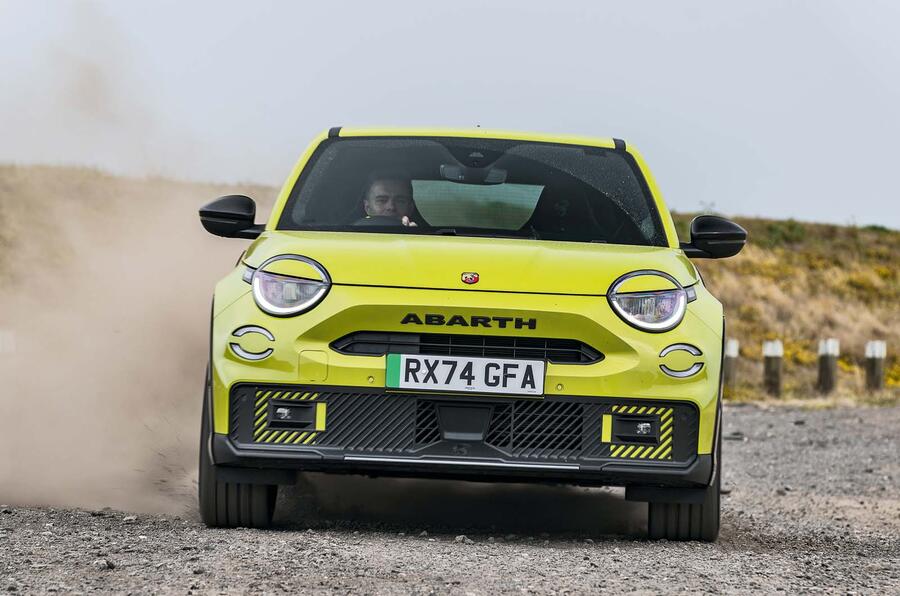
What does any of this have to do with cars? Well, in case you had somehow managed to miss its dazzlingly yellow, aggressively sculpted silhouette jutting out at you from the page, the expedition vehicle chosen to deliver me to my arachnid appointment is the new Abarth 600e – a 278bhp wild child that adds sports car pace and slippy-diff silliness to the oh-so-sensible Fiat 600e crossover.
Like the scorpions freshly delivered to our shores on a ship from Italy, it’s one of the earliest entrants into an intriguing new crop of dedicated electric hot hatchbacks.
For rivals, consider everything from the technically identical Alfa Romeo Junior Elettrica Veloce and incoming Peugeot e-208 GTi to the smaller but similarly conceived Alpine A290, the rear-driven Cupra Born VZ and even sporty petrol crossovers like the Ford Puma ST.
The link between our two subjects here is quite obvious. In fact, it’s plastered flagrantly all over the car. There is a touch of semantic trickiness to address, though: while the origins of these scorpions are Italian, Carlo Abarth was Austrian by birth. But he was a naturalised Italian citizen and his eponymous firm was founded there.
However, he was born on 15 November, making him a Scorpio and lending a pinch of sentimental authenticity to his choice of emblem.
Abarth’s story is one you would be forgiven for not knowing, with his tuning outfit long ago folded into Fiat and operated since as a quasi-brand, but it’s just as interesting as those of legends such as Ferruccio Lamborghini and Horacio Pagani.
The opening scene of a two-hour epic on Carlo (or rather Karl) would begin with a sepia-tinged flashback of him hurtling down a side street of his Viennese neighbourhood on a scooter at the age of 11, miles ahead of friends who hadn’t had his bright idea of wrapping the wooden wheels in a speed-boosting leather belt – an early sign of the engineering nous that would shape his legacy.
Remaining on two wheels throughout his early career, Abarth spent time at Italian coachbuilder Castagna before returning to his homeland to work for Austrian motorcycle manufacturer Motor Thun.
There he quickly established himself as a highly competitive racer, building his own custom machine in this period as the first vehicle to wear the Abarth name.

A serious smash at Linz prompted Abarth to consider more stable means of transportation, and the next few years he spent building and racing sidecars – most famously against the Orient Express from Vienna to Ostend in 1934 (he won, naturally). And then it was onto cars.
Abarth & C was established in 1949 as a supplier of tuning kits – with an associated race team that ran a batch of highly modified end-of-the-line sports cars from Carlo’s previous employer, Cisitalia – and was particularly well known for its lairy exhaust systems, which have become a calling card of everything the brand has put its name to over the past 76 years.
The firm established a strong relationship with Fiat through the 1950s and 1960s, building hopped-up versions of the Nuovo 500 and running its racing operations, before being fully acquired by the Italian giant in 1971 and becoming its factory racing arm.
A few years and a couple of left-field rallying icons (the Fiat 124 Abarth and 131 Abarth) later, Abarth was merged with Lancia’s motorsport operation and somewhat lost its identity, the company itself being wound up in the early 1980s and its name only being deployed for a couple of charismatic but lesser-known hot hatchbacks over the following decades.
It wouldn’t be until 2007 that the Abarth name was dusted off and the brand positioned once again as a proper in-house performance outfit, staging its – ahem – grande comeback with a hot Grande Punto, and following it soon after with a wild 500 (later becoming the 595 and 695 and remaining in production until last year).
And that brings us pretty much to now. The Abarth of today is far removed from the plucky racing underdog it once was and the cars that wear Carlo’s star sign on their nose are nothing like the revvy, lightweight pocket rockets he was building in the glory days, but you don’t have to dig deep to uncover the spiritual links.
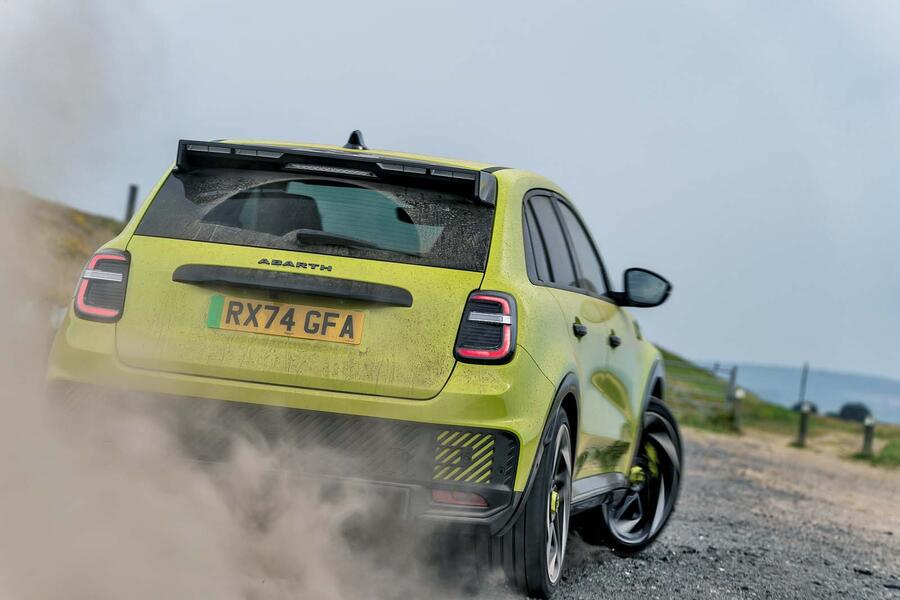
Case in point: even with an exclusively electric offering in 2025, noisome soundtracks remain a hallmark of the Abarth experience – of which I am harshly reminded upon ‘firing up’ the 600e in a quiet beachside car park on the Isle of Sheppey and drawing the intrigue (or ire) of bystanders as the synthetic exhaust whirs obnoxiously into life.
The speaker behind the rear bumper is a cute nod to the blaring pea-shooter tailpipes on which Abarth largely built its reputation, but the slightly unconvincing drone it emits is hardly reminiscent of the angry, rasping cackle of the Bialbero (twin-cam) engines that Abarth hung out the back of diddy sports coupés in the 1950s and 1960s. (Head to YouTube and thank me later.)
A few seconds of hasty, red-faced fumbling for the off switch later and I’m off up Sheppey’s north coast on my quest to unite this scorpion with its creepy-crawly compatriots (ignoring the other slightly awkward truth that the 600e is built in Poland, not Italy – but let’s not split hairs).
It’s a warm evening, so the playgrounds and pubs we pass are busy, which gives a good opportunity to gauge public reaction to this very extroverted new car with a largely unfamiliar name stencilled brazenly on its flanks.
Even with the ‘exhaust’ silenced, this isn’t a car for wallflowers: phones are frantically extracted from pockets and pointed in our direction, kids on bikes screech to a stop and stare, and curious fishermen on the wharf allow at least one eye to sneakily drift away from their floats for a second.
A couple of builders come over for a look while we’re taking photos and seem impressed. “Bet that’s got a massive exhaust as well,” one says, gesturing generally at the 600e’s massive sports wheels and touring car-esque bodykit. “Funny you should ask. It does, but…” I start replying, before he cuts me off with: “I knew it would. I had one like that in the ’90s that sounded like a Spitfire!”
He and his mate are off before I can ask more about his old motor, leaving my brain scrambling to think of any modern classic that one might naturally align with this chunky family crossover.
But whether he had a Citroën Saxo or a Honda Civic (or maybe, wonderfully, a Fiat Ritmo Abarth 125 TC), his appreciation of the 600e is testament to the enduring appeal of an unapologetically extroverted hot hatchback.

This latest interpretation of the genre isn’t so far removed in its conception from some of the best of the breed. Take a humble, compact family hauler, add some power, beef up the bodywork, stick on some more competent rubber, stiffen the suspension, slap on some racy decals and away you go: it’s a recipe that rarely fails, and it’s one that can arguably trace its origins right back to none other than Carlo Abarth himself.
He might not have known what to make of this high-riding hooligan – relatively towering and tech-laden as it is, compared with the soapbox-sized racers he preferred – but chances are he would be pleased to see his name is still being applied to cars that major on fun and cheekiness above all else.
Hopefully, anyway, as the Abarth of today – in its characteristically shouty way – hasn’t been exactly shy about marking its 600e out from the Fiat on which it’s based. Aside from the unmissable ‘ABARTH’ graphics down each side, there are scorpion emblems on the nose, in the front splitter, at the base of the A-pillars, in the headrests, on the massive rear spoiler, in the wheels’ centre caps, on the steering wheel and in the rear bumper.
Oh, and there’s one on the key. I count 13 in total. That’s not to mention the angry-looking scorpion-tail pattern of the upholstery or the various warnings throughout the cabin to ‘mind the scorpion’ – an irreverent slogan that I can’t help thinking would be meaningless on literally any day but this.
As it is, it’s an MO I’m happy to adhere to as I approach Sheerness Dockyard under a rapidly darkening sky and make my way to the old officers’ quarters – a row of ornate Victorian townhouses seemingly lifted from a quiet Kensington mews and plonked incongruously in a corner of this working commercial port.
Here, I edge the 600e cautiously along the old, unfinished Church Road towards the disquietingly imposing silhouette of its unlit namesake. I’m invited by a resident to shut off all the lights and follow him on foot down a track along one of the old harbour walls, where we stand the best chance of meeting our new mates.
This, in fact, is exactly where the Italian expats set up shop when they disembarked that trade ship all those years ago, and it’s where they’ve apparently quite happily remained.

For a few worrying minutes, it seems the scorpions don’t fancy it. We trudge up and down, waving our UV torches all over the wall and peering into cracks, but there’s nothing to see; maybe we’ve come at the wrong time? Maybe the weather’s not quite right? Maybe they always preferred Innocentis or Autobianchis.
But then, as the last of the keening gulls calls it a day and the sun finally slips below the horizon, one of our beams catches an unmistakable flash of blue in a high corner. An excited (but quiet) cry of joy goes up, and we crowd around to peer up at this oddly incandescent insect, almost as incongruous and conspicuous in these drab industrial surroundings as the one we arrived in.
Then we can’t move for the things. We spot their claws bulging from microscopic cracks in the mortar, they lounge stock-still on the concrete footings and we even uncover clusters nestled in the long grass below.
They’re a languid sort and not easily aggravated, but even leaving aside any lingering squeamishness, we’re visiting them at home and want to remain respectful, so try not to get close. We don’t want to end up like one unfortunate woodlouse that we see meet a swift end when it stumbles inadvertently right into the gap between a scorpion’s arms.
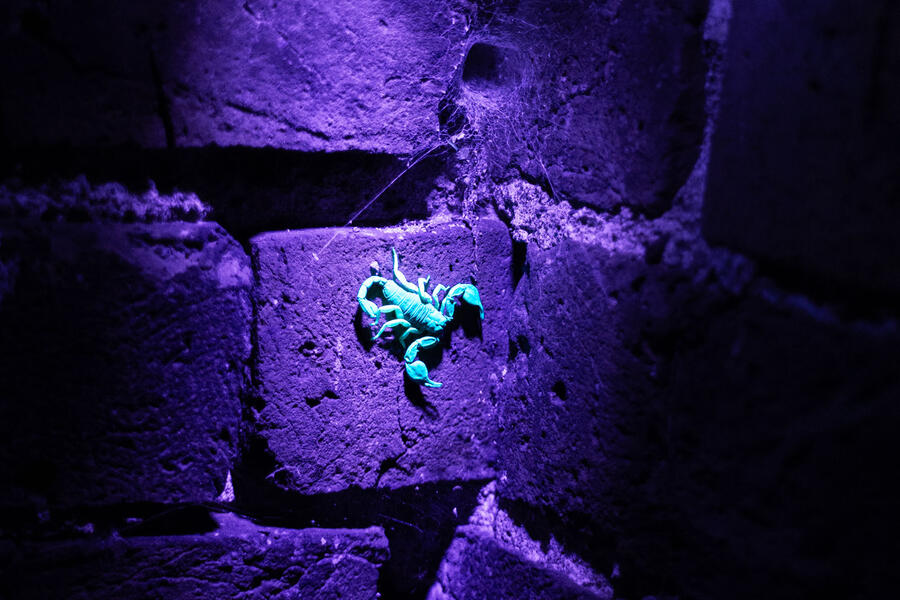
As I pack up after a successful hunt and embark on a side quest for fish and chips, I can’t help considering whether I haven’t stumbled upon a pretty neat metaphor for the 600e that runs deeper than mere bonnet badges and headrest emblems.
Sure, there are connotations of spikiness and aggression to be drawn from the Abarth logo that you could apply to both car and creature, but I like to think that the Italian brand’s status as a quirky, disruptive left-fielder, little known but much loved by those who are familiar, is none too dissimilar to that of my new friends at Sheerness harbour.
And just like the scorpions, we should all be grateful that Abarth has stuck around for so long and do what we can to make sure it’s around for much longer.



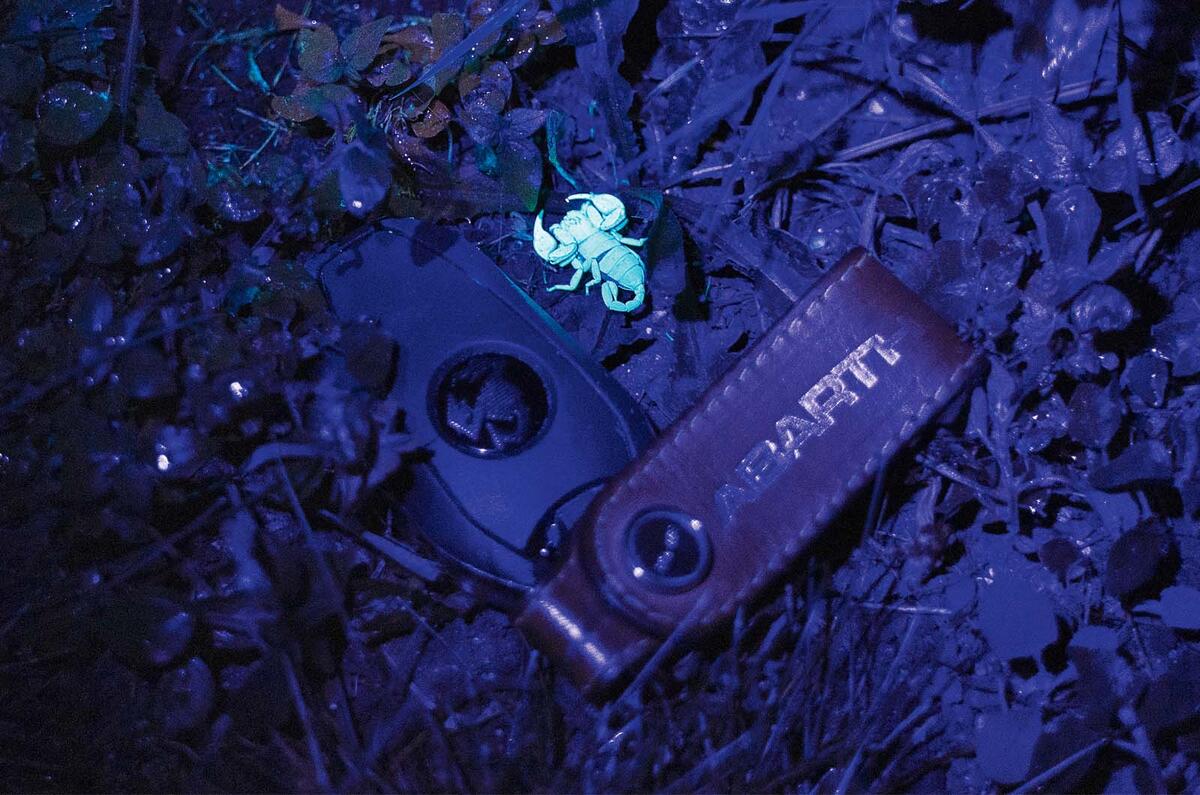


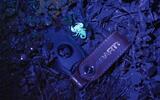








Join the debate
Add your comment
I live in Turin, where Abarth was based. Until the 1990s the legendary Abarth factory in Corso Marche 38 was alive and kicking, home to the racing operations of Lancia and Alfa Romeo. Back then, it wasn't uncommon to see Delta Integrales and Alfa 155 V6s in the iconic Martini Racing livery being loaded to the car transporters, ready to take part in world rallies or DTM races. By contrast, when the Abarth name was "dusted off" in 2007... it was just a trademark.
Still lives up to the acronym FIAT? Fix it again tomorrow!
How unimaginatively and predictably droll.
And then I saw the price, and then I saw the range... good luck with that.
Quordle might be the ideal addition to your gaming library if you're looking for a new game to challenge your vocabulary while having fun with an interesting gameplay mechanic.